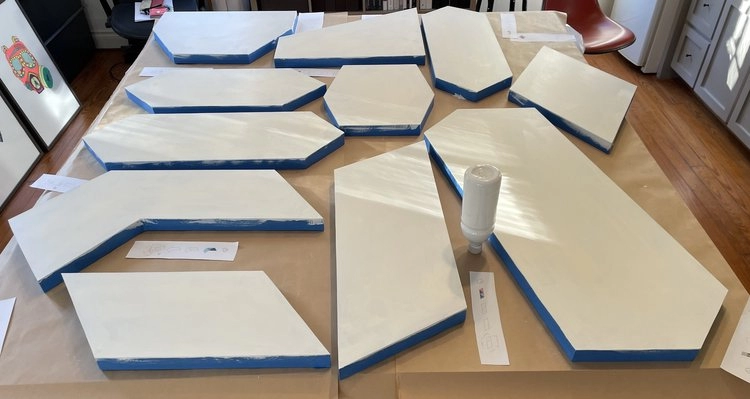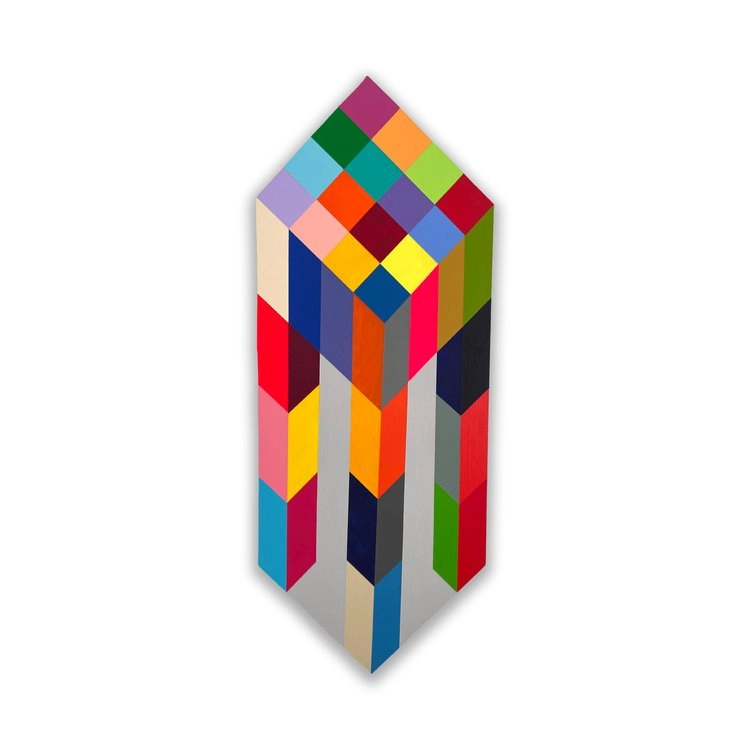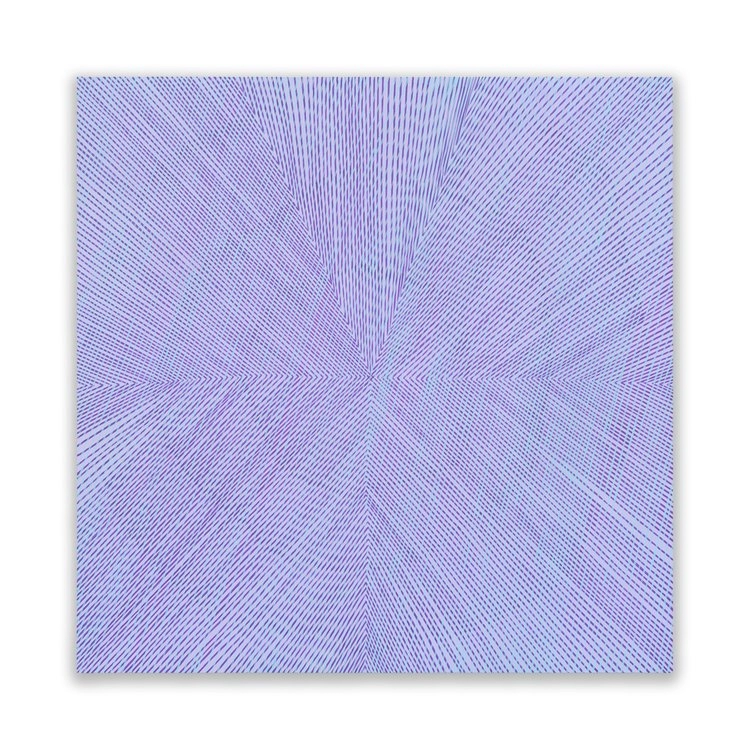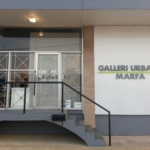Gail Peter Borden
‘Figured Frames’

GALLERI URBANE
About GALLERI URBANE

The forms that Borden creates – epitomes of an exquisitely precise synergy between material, color, and proportion – invite viewers to perceive two- and three-dimensional structures anew. Playful and rigorous, they harness aspects of architecture but ultimately transcend its circumscribed sets of questions and answers.
In this recent series, Borden reveals a novel approach. “Previously, I stayed in orthogonal forms – squares, rectangles – and focused on the idea of surface and composition within that. [For Figured Frames], I have started to fabricate custom-geometry frames,” the artist says. “So they’re still precisely geometric, but they now become extensions of the interior geometries,” which he previously explored only within the confines of each frame, each exterior surface remaining a window or portal. Now, dimensionality emerges, derived from an extension of the composition. “They now become objects.”

Within the artist’s oeuvre, fields of color strategically – and structurally – imply depth. “Color is the composition,” Borden says. “In almost none of [the works] is there really ever line, it’s always tone. And so edge or geometry is always made through a juxtaposition of color.” The layering of shades creates optical impressions, forming veils or transparencies, while the play of dominant and recessive colors provokes oscillatory effects and the slick, reflective resin establishes a plane of engagement.
But in its scope, the Figured Frames series introduces new terrain. “Each [piece] has an open window to a sort of interiority,” Borden says. “So there’s an implied space and [both] a revelation and concealment of what you see and what you project in terms of depth.” On one wall, a field of pieces unites into a constellation of modular elements but also establishes dynamic juxtapositions between objects of various color families, scales, and sensibilities. They play with different modes of seeing: forming protruding or receding perspectival planes.

To see these open structures is to contemplate spatial perception itself – a cerebro-visceral experience, unveiled. It can become an act of discovery at any point. “Only through time, movement, perception, and context can the piece be understood as a quiet participant in its understanding. The object provides a dialogue by revealing that which is already there.”

Mel Prest
Mel Prest is an American abstract artist whose work is focused on color and perceptual visual relationships. Her work has been exhibited internationally including: The Drawing Center, New York; The Weatherspoon Museum of Art, Durham; IS Projects, Leiden; Saturation Point, London; Nakaochiai Gallery, Tokyo. Prest’s first solo museum show: Mel Prest: The Golden Hour, was held at the Schneider Museum of Art in Ashland, Oregon and featured a catalogue essay by John Yau. Prest has been awarded residencies at The MH deYoung Museum; The Ragdale Foundation; The Sam and Adele Golden Artist Foundation; Willapa Bay AIR; The Wassaic Project; and Vermont Studio Center. Her work is held in collections at Apple; The Berkeley Art Museum; The Crocker Museum of Art; Google; Kaiser Permanente; Marin General Hospital; The Mills College Art Museum, The Schneider Museum of Art; among others. She is represented by Galleri Urbane, Dallas, TX and K.Imperial Fine Art, San Francisco, CA.
Prest received her BFA in Painting from Rhode Island School of Design and MFA from Mills College in Oakland. Mel is an advisory board member of Root Division, a non-profit arts organization in San Francisco and served as a board member from 2012-2014. Prest served on the advisory board of The Art Monastery Project, Calvi della Umbria and Labro, Italy from 2007-2010 and on the artist advisory board of Trestle Gallery in the Sunset Park neighborhood of Brooklyn, New York from 2012-2021.
As an independent curator, Prest has organized shows from Amsterdam to Zagreb. She is a founding member of Transmitter, a collaborative curatorial gallery initiative in the Bushwick neighborhood of Brooklyn, New York. Mel Prest lives and works in San Francisco, CA.
No listing found.


